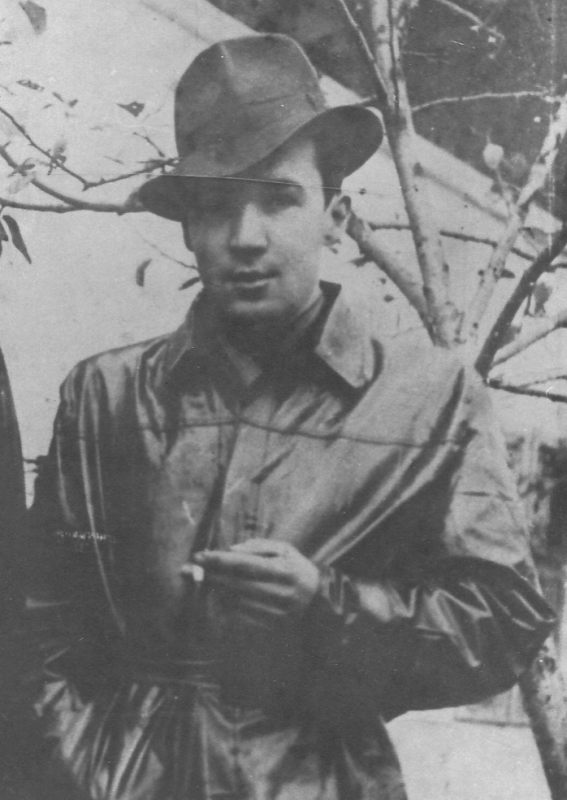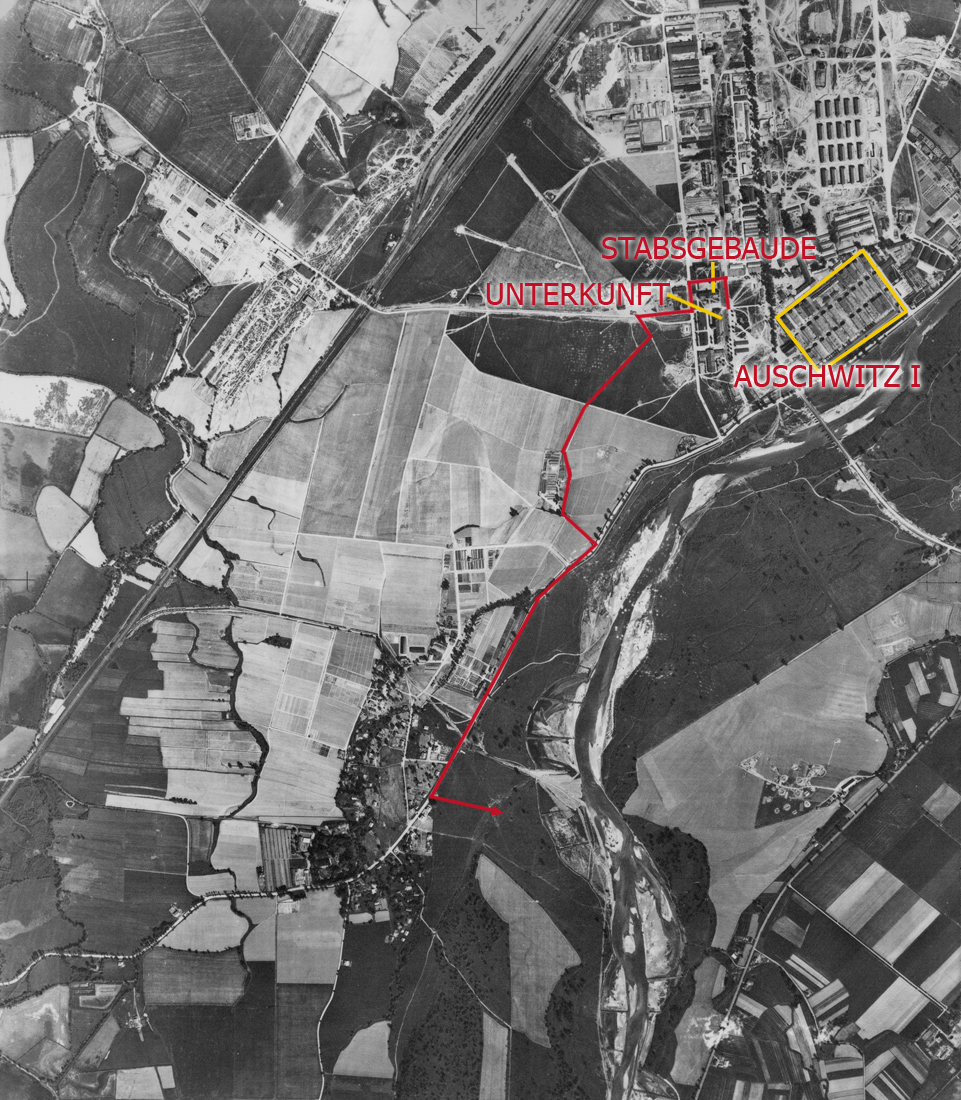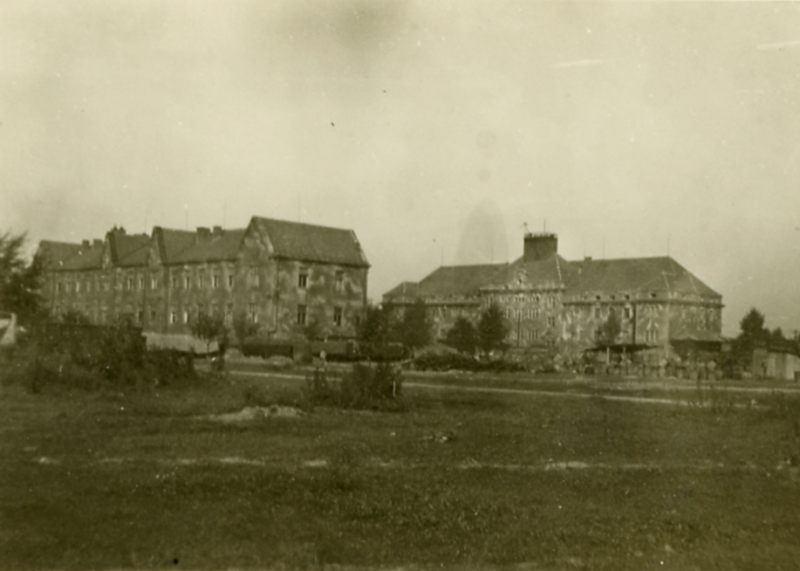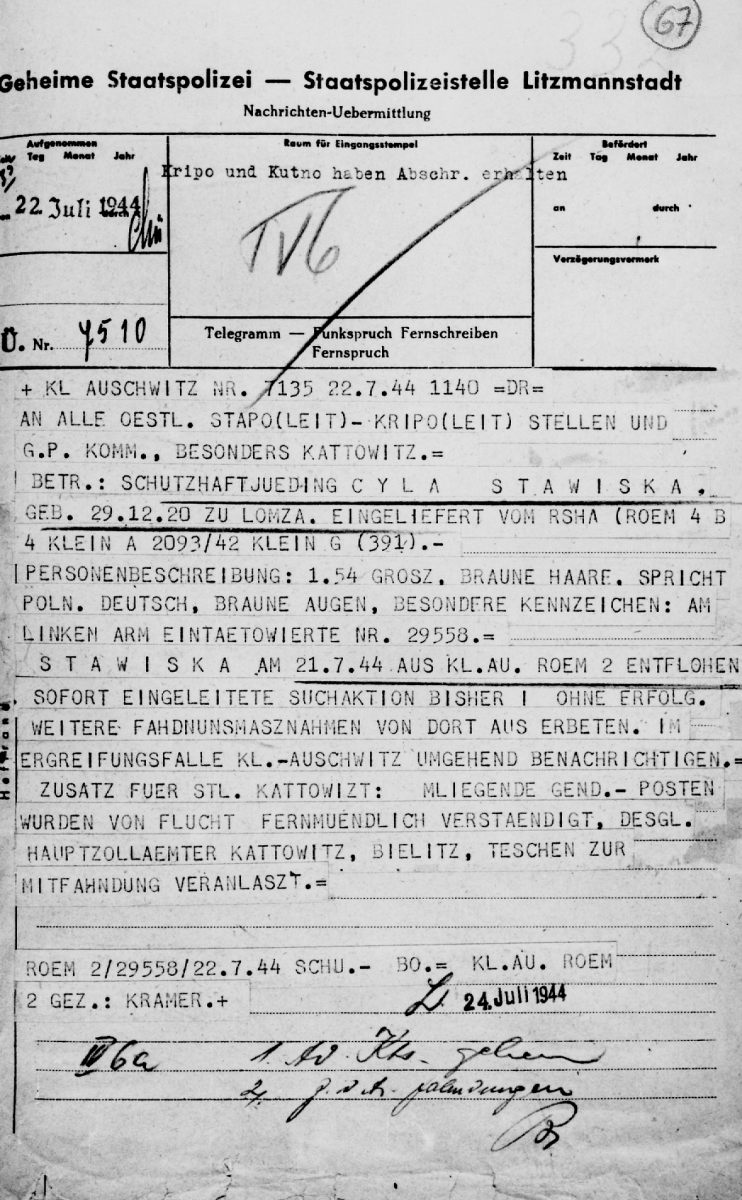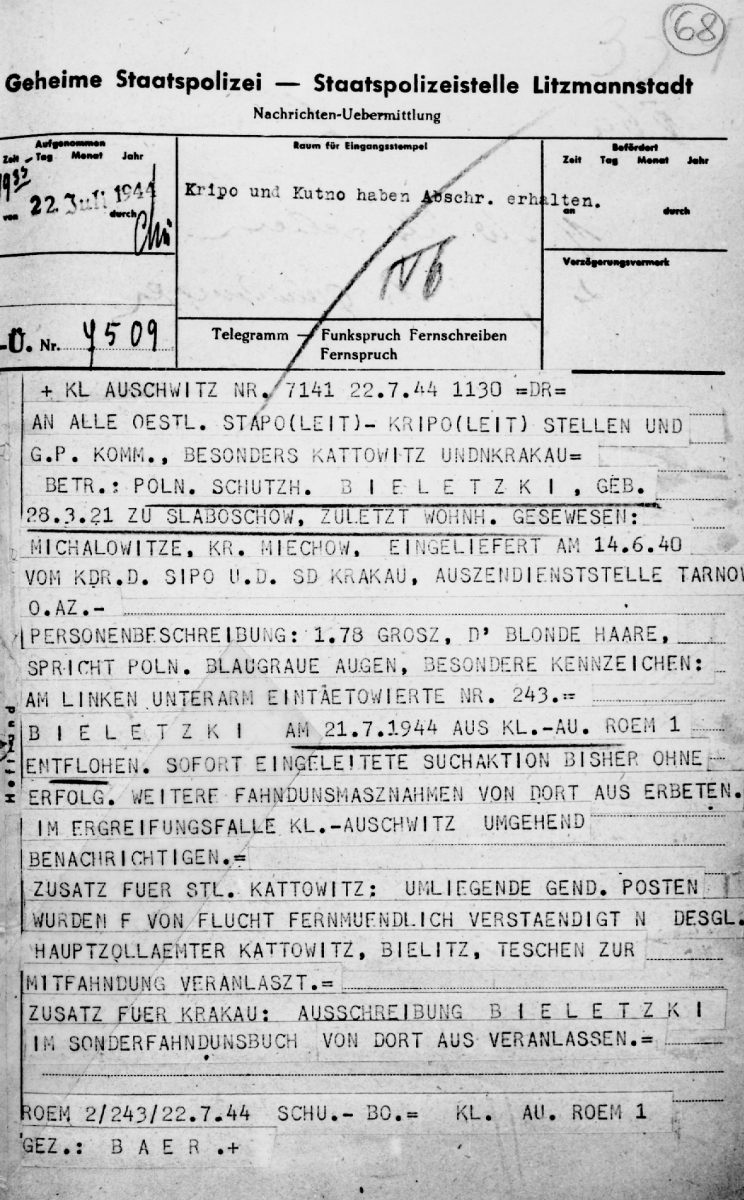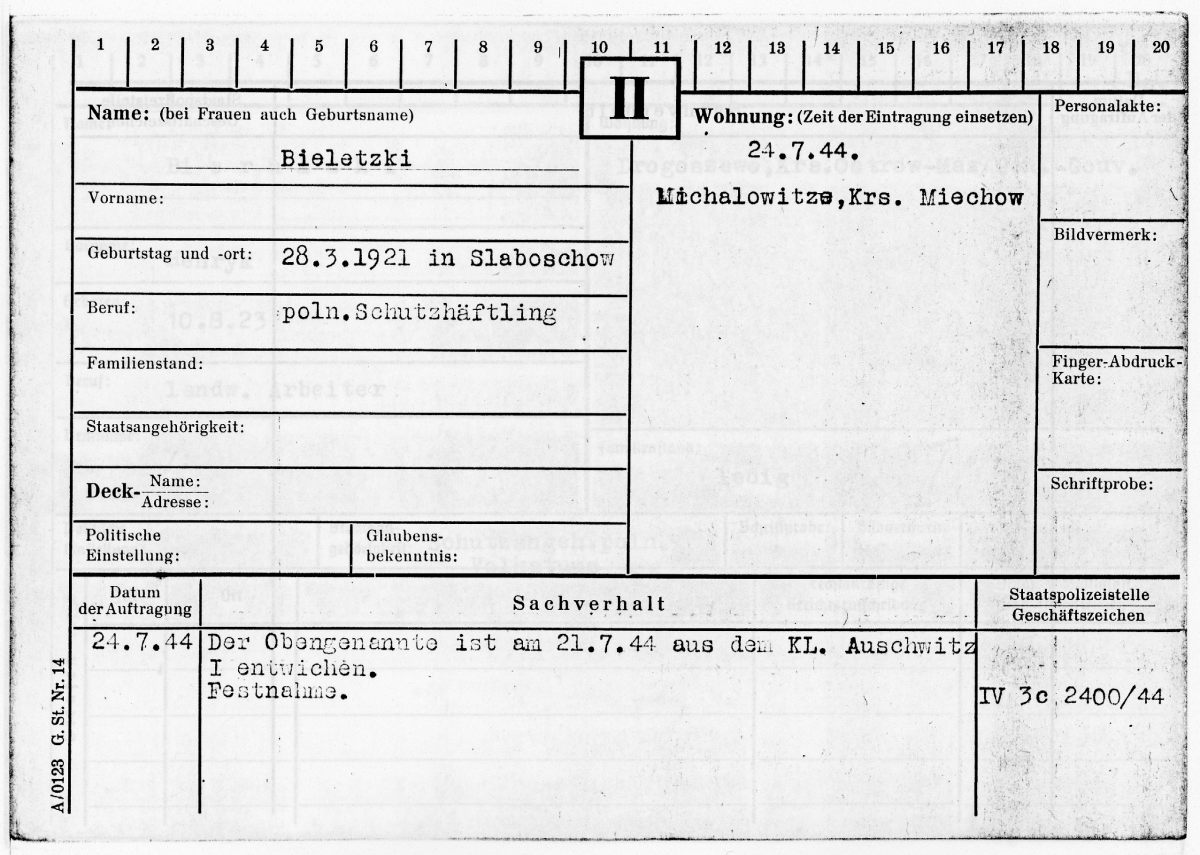In 1944 Jerzy Bielecki was employed in the grain warehouse located in the building of the so-called Unterkunft in the vicinity of the main camp. A small group of female prisoners was also working there, repairing grain sacks. Cyla Cybulska (in the camp Stawiska) was one of them. Bielecki and Cybulska met at work and fell in love. When the group of female prisoners was later employed in the neighbouring building, so-called Stabsgebäude, it did not prevent the lovers from continuing their secret dates. At the time, Bielecki began the preparations for their joint escape. He proposed the participation in the escape to his friend Tadeusz Srogi, employed in the SS clothes warehouse. However, he refused, but provided Bielecki with the uniform and an SS pass enabling the potential escapee to leave the camp. Based on this pass, Bielecki prepared six documents the same type in different colours. It was necessary due to the fact that every couple of days, the colours of passes used in the camp by the SS men were changed. The printing of documents was possible thanks to the prisoner employed in the camp printing house, who provided Bielecki with appropriate fonts.
The escape took place on 21 July 1944. In the afternoon Bielecki asked the SS man employed in the warehouse to let him leave work for a few moments in order to collect the sausage presumably “organized” for him by prisoners from the butchery. The SS man agreed on condition that he would receive part of the cold cuts. Then the escapee headed towards the place where he had hidden the uniform, got changed and went to Cyla’s workplace. Presenting himself as a Politische Abteilung functionary, he called her for interrogation and then took her outside the building. They both headed towards the Raisko sub-camp, near which one of the exits beyond the large guard chain was located. At the checkpoint he presented his fake pass. It did not arise any suspicion, so they easily left the area around the camp. Marching at nights, they reached the outskirts of Cracow, where they were hiding in different villages. After some time, Bielecki joined a Home Army partisan unit, in which he fought until the end of the war. Cyla, in turn, having received the information that her beloved perished in combat, left the Czernik family, in Przemęczany village, where she found refuge. Eventually, she emigrated to the United States after the war. They did not meet until 1983. Two years later Jerzy Bielecki was awarded the medal of the Righteous Among the Nations and the title of the Honorary Citizen of the State of Israel.

